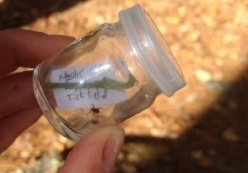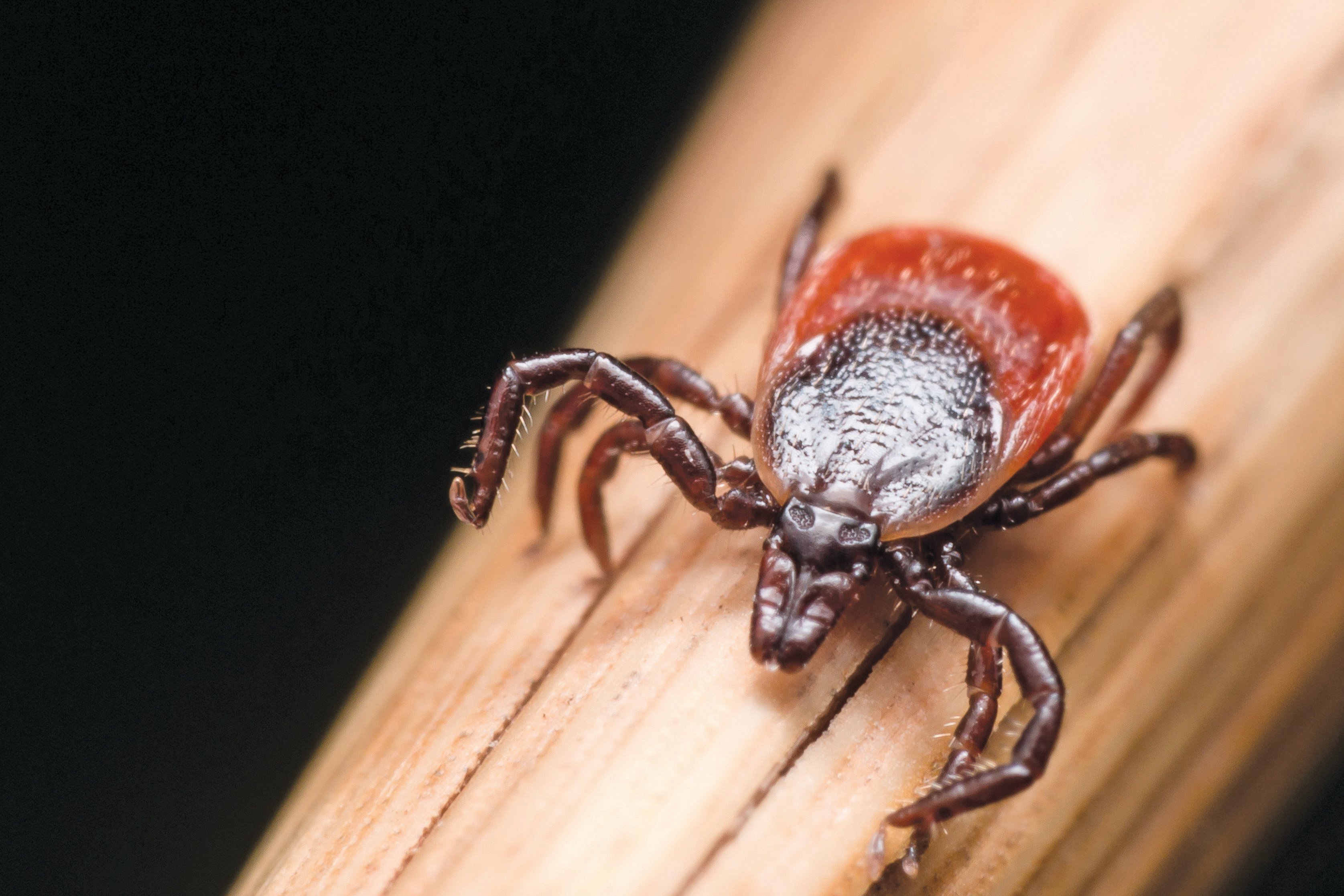Integrated Tick Management
Have you heard several tick-related stories recently? Listened to predictions that we will see an increase in tick populations? Read an article on why we may be seeing a rise in Lyme disease? Watched a story about a new case of Powassan virus? A lot of information has surfaced on ticks in the last few year. While there are hundreds of species of ticks, there is one main culprit in spreading both of the above diseases to humans.
 Ixodes scapularis, the black-legged tick or deer tick, is the main vector of Lyme disease and Powassan virus to humans. Black-legged ticks are born disease free, and it is during their first larval stage blood meal that the tick may acquire a disease from an infected host. White-footed mice and other small mammals are known in the Lyme disease cycle as the primary reservoir hosts carrying the disease and infecting the larval tick.
Ixodes scapularis, the black-legged tick or deer tick, is the main vector of Lyme disease and Powassan virus to humans. Black-legged ticks are born disease free, and it is during their first larval stage blood meal that the tick may acquire a disease from an infected host. White-footed mice and other small mammals are known in the Lyme disease cycle as the primary reservoir hosts carrying the disease and infecting the larval tick.
Egg to Larva
The black-legged tick begins its life as an egg mass of up to 2000 eggs. The adult females lay their eggs in the fall or spring in the leaf litter. The eggs begin to hatch out into larva in early spring. The tiny six-legged larvae will disperse from the egg mass to seek their first blood meal. Ticks sense or seek sources of carbon dioxide from living hosts to obtain their blood meals, and they require a blood meal to molt into the next developmental stage. The first meal for the larval stage is typically a small mammal such as a rodent, mouse, or chipmunk.
The tick larva spends the first summer and fall looking for a host. When it finds one, it will likely feed for two or three days, then drops off and seeks a sheltered spot on the forest floor where it will overwinter. During this period of dormancy, the tick molts into the nymphal form.
Nymph
Eight-legged nymphal ticks are active spring through late summer. They are typically found in moist leaf litter or at the edge of wooded areas. The pinhead-sized nymphs seek their next blood meal and usually attach to smaller mammals; however, they can attach to larger mammals such as deer and humans. Once the nymph has found a host, they will stay attached for about 3-4 days to engorge fully with blood. It is during this life stage that people are most likely to contract tick-borne diseases due to the fact that tiny infected ticks often go unnoticed on their human hosts. Once they are fully fed, they will drop off, molt, and emerge as adults in the fall.
Adult
Adult deer ticks are active October through May or anytime the temperature exceeds 40F. Adult black-legged ticks prefer larger hosts such as deer or humans. The adult ticks will seek a host by questing on the tips of knee-high branches, grasses, or in low-lying wooded vegetation and shrubs. Once the adult deer tick is fully engorged, they will again drop off their host into the leaf litter where the females will lay their eggs. The cycle will start again the next spring.
Would you like to learn more about Lyme disease and other tick-borne diseases? Visit our resource center to learn more.
Contact Us to Learn More About Effective Tick Management Strategies:
 Since 1992, Vector Disease Control International (VDCI) has taken pride in providing municipalities, mosquito abatement districts, industrial sites, planned communities, homeowners associations, and golf courses with the tools they need to run effective mosquito control programs. We are determined to protect the public health of the communities in which we operate. Our mosquito control professionals have over 100 years of combined experience in the field of public health, specifically vector disease control. We strive to provide the most effective and scientifically sound mosquito surveillance and control programs possible based on an Integrated Mosquito Management approach recommended by the American Mosquito Control Association (AMCA) and Centers for Disease Control and Prevention (CDC). VDCI is the only company in the country that can manage all aspects of an integrated mosquito management program, from surveillance to disease testing to aerial application in emergency situations.
Since 1992, Vector Disease Control International (VDCI) has taken pride in providing municipalities, mosquito abatement districts, industrial sites, planned communities, homeowners associations, and golf courses with the tools they need to run effective mosquito control programs. We are determined to protect the public health of the communities in which we operate. Our mosquito control professionals have over 100 years of combined experience in the field of public health, specifically vector disease control. We strive to provide the most effective and scientifically sound mosquito surveillance and control programs possible based on an Integrated Mosquito Management approach recommended by the American Mosquito Control Association (AMCA) and Centers for Disease Control and Prevention (CDC). VDCI is the only company in the country that can manage all aspects of an integrated mosquito management program, from surveillance to disease testing to aerial application in emergency situations.


